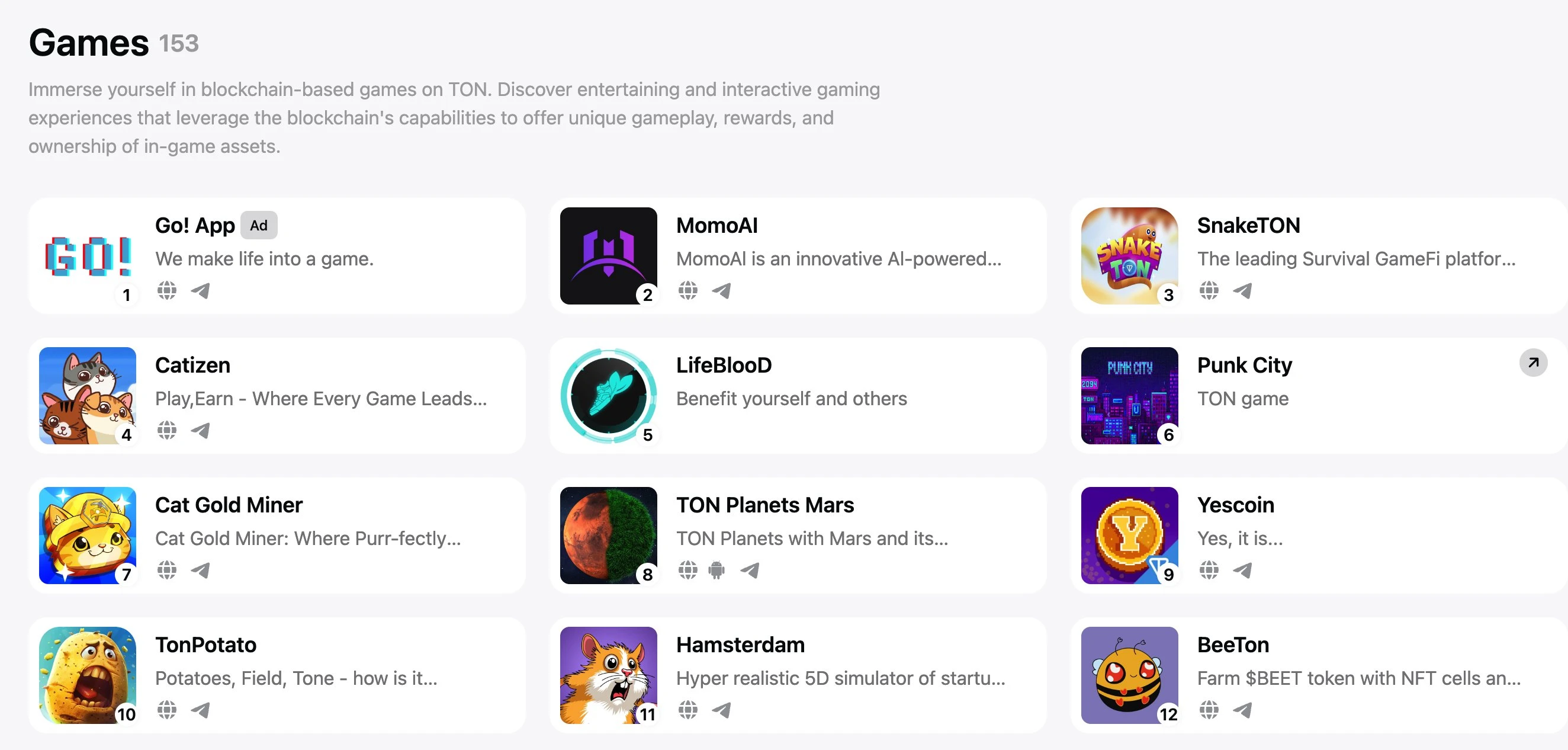Original author: CaptainZ (X: @hiCaptainZ )
I have been researching blockchain games for almost two years and have seen almost all the game projects on the market. From the initial excitement to the confusion and then to the surprise when I saw the full-chain game, it was full of ups and downs. Here I try to make a summary of my thoughts on the future development of blockchain games, hoping to be helpful to VC investment and game builders.
As the application end of the 网页3 industry, blockchain games once entrusted the industry with the task of mass adoption, but as we all can see, almost all projects are short-lived. Previously, Lao Bai ( @無火球 ) of ABCED said that there are three directions for blockchain games in the future, namely:
-
3 A-level GameFi (very playable game, blockchain is only used to issue coins)
-
GameFi at the casual game level (games with relatively weak playability, blockchain is only used to issue coins)
-
Fully on-chain gaming (game logic written into smart contracts)
I strongly agree with this proposal, but I have a different view on the results of the development.
Lets talk about the first one first. The popularity of blockchain games started with projects like Farmer World and Spaceship. To put it bluntly, there is no playability at all. It is just a Ponzi scheme for virtual mining. But everyone thinks that the game is not playable enough, so from 2020 to 2022, various VCs invested heavily in traditional studios that can produce excellent games. So, if the game reaches the 3A level of playability, it can break the circle and become a successful blockchain game? Not necessarily.
Here we first need to introduce the concepts of investment users and product users. Tracy ( @CTracy 0803 ) first mentioned these two concepts in the article Web3 Marketing Thinking Transformation: Building a New Framework Centered on Investment Users:
-
Product-oriented users: refers to consumer users who focus on the user experience and functions of the product itself and expect to gain satisfaction or convenience through the product.
-
Investor users: refers to the user group that expects to get a return on investment through the product. Their focus on the product is not only on the user experience, but also on the economic value and future development potential of the product.
Obviously, the typical users of Web3 are investment users, or in other words, they are degen (gamblers) with a very strong speculative mentality. You cant expect such a user group to play a 3A game honestly. They dont have the time or the mood. If you set the play to earn rate a little higher, it will soon collapse. The production cost of 3A games is still quite high. If it collapses too quickly, the cost will not be recovered.
It is obviously inappropriate to put AAA blockchain games in the Web3 circle. The logic does not make sense. This is called PMF mismatch. So what should we do? In fact, we can go into the traditional game circle and change the customer base from Web3 to Web2. Isnt it very playable? Isnt it AAA level? As long as the quality is good, the billions of potential users of Web2 are the target, why bother to focus on the hundreds of thousands of potential users of Web3? And even if you set an extremely low rate of return, players will enjoy it and be grateful.
Lets talk about the second one, GameFi at the casual game level. There are currently two forms: those that rely on social platforms and those that do not rely on social platforms. A typical example of the former is Hamster Kombat, and an example of the latter is The Beacon. Hamster Kombat is a click game based on the Telegram applet. Users only need to open the game link in the mobile phone Telegram (actually an H 5 page) and keep clicking on the Hamster avatar to generate points, which can be exchanged for tokens later (but the tokens have not yet been issued). The game is extremely simple, but the number of participants is also extremely large. The official said last week that the number of players has exceeded 150 million (although we know that there are many bots, the remaining volume is still huge). The Beacon is a dungeon clearance game incubated by TreasureDAO. The playability of the game has been improved. Players use the keyboard to control the character to dodge and kill various monsters in the dungeon (in fact, a full-stack single-player game studio can make it in 3 months). Currently, the game only supports computer browsers, not mobile phones. It is estimated that the cumulative number of Beacon players should be only a few hundred thousand.
Currently, neither game has issued tokens. The reason why people participate is obviously because of the expectation of some kind of airdrop. We can even say that the day when the tokens of the two games are issued is the day of their death. Although Beacon is more playable than Hamster, Web3 users are basically investment users. They even think that Hamster has reached a much higher mass adoption than Beacon, so should the market value be higher (refer to NOTCOIN)? Therefore, I think that blockchain games based on social platforms have more development prospects, because:
-
Social media platforms are all mobile apps, making it easier for users to participate using their mobile phones
-
Mobile app participation makes it easier to make use of fragmented free time
-
It is easier to rely on social media for viral marketing and dissemination
-
It is easier for users to stay in their own hands (tg channel, twitter account, youtube channel, etc.)
Finally, lets talk about all-chain games. On-chain games are games that write game logic into smart contracts to achieve decentralization and trustlessness of games, similar to DeFi (decentralized finance). It is still in the technical exploration stage, but the infrastructure such as game engines has begun to improve, and there are more than a dozen small games in testing. It was popular for a while last year, but now it has become quiet again. I think the reason why all-chain games are not popular is very simple: there is a lack of hype targets. Especially in the context of a bull market, the market hotspots change very quickly. If a track does not have a hype target and no money-making effect, retail investors will immediately be attracted by the track with the most fierce market growth. Of course, there is another reason: I tried several on-chain games and found that the gameplay is too complicated and it is difficult for ordinary users to get started. Always remember that the typical user of Web3 is a degen like investment-type users. There is no coin to hype, and the gameplay is complicated, so users will only stay away. At present, all-chain games urgently need a new token distribution (mining) model similar to liquidity mining and inscription.
To sum up, from the perspective of VC or blockchain game project owners, my views are as follows:
1. If you have strong technology, first consider decentralized full-chain casual games based on a social platform. Why? Full-chain games are decentralized games, which conform to the industrys correct worldview and are the core narrative. Add casual games and rely on social platforms to easily obtain traffic. Lets take a simple example: make a chain version of Hamster Kombat. When promoting it, you can say that we are a decentralized game, and all game behaviors are recorded on the chain. Isnt it sexy and full of buffs? It immediately distances itself from other TON ecological projects.
2. If you have strong operational capabilities, first consider centralized GameFi games based on a social platform. The first choice is of course TON, which is supported by both market hotspots and Telegram officials. Although there are already dozens of small games, there is still room for optimization/innovation. Telegrams traffic is relatively garbage, but the volume is large, the book data will look good, and it will also be convenient for future traffic transformation (telling stories to retail investors or VCs). Another thing is that you can also consider other social platforms, such as Twitter. Didnt Solana just announce that the blinks technology can be embedded in Twitter? Can it be used in games? Can you make a game plug-in based on Twitter? What is important is not which specific platform, but the use of existing social networks to carry out viral marketing.
3. It is not recommended to invest in/produce large-scale 3A blockchain games targeting Web3 users. This is a pitfall. However, large-scale 3A blockchain games targeting Web2 users are promising (a dimensionality reduction attack). The above thoughts are hoped to be helpful to VCs and builders.
This article is sourced from the internet: Discussing the future development of blockchain games from the perspective of VC and Builder
Related: VanEck: Why did we apply for the SOL ETF?
Original article by Matthew Sigel, VanEck Original translation: Ismay, BlockBeast Editors Note: SOL has long been expected to become the third ETF after Bitcoin and Ethereum. However, the SEC once characterized SOL as a security, hindering the advancement of its ETF. Today, VanEck has filed an application for the first Solana ETF, which is exciting news and marks an important first step towards approval. This move not only shows the markets confidence in Solana, but also heralds the further development of the cryptocurrency ecosystem. Matthew, head of digital asset research at VanEck, details why SOL has the potential to become an important digital commodity and VanEcks outlook for its future. The following is the original content: I excited to announce that VanEck has just filed for the first Solana ETF…








